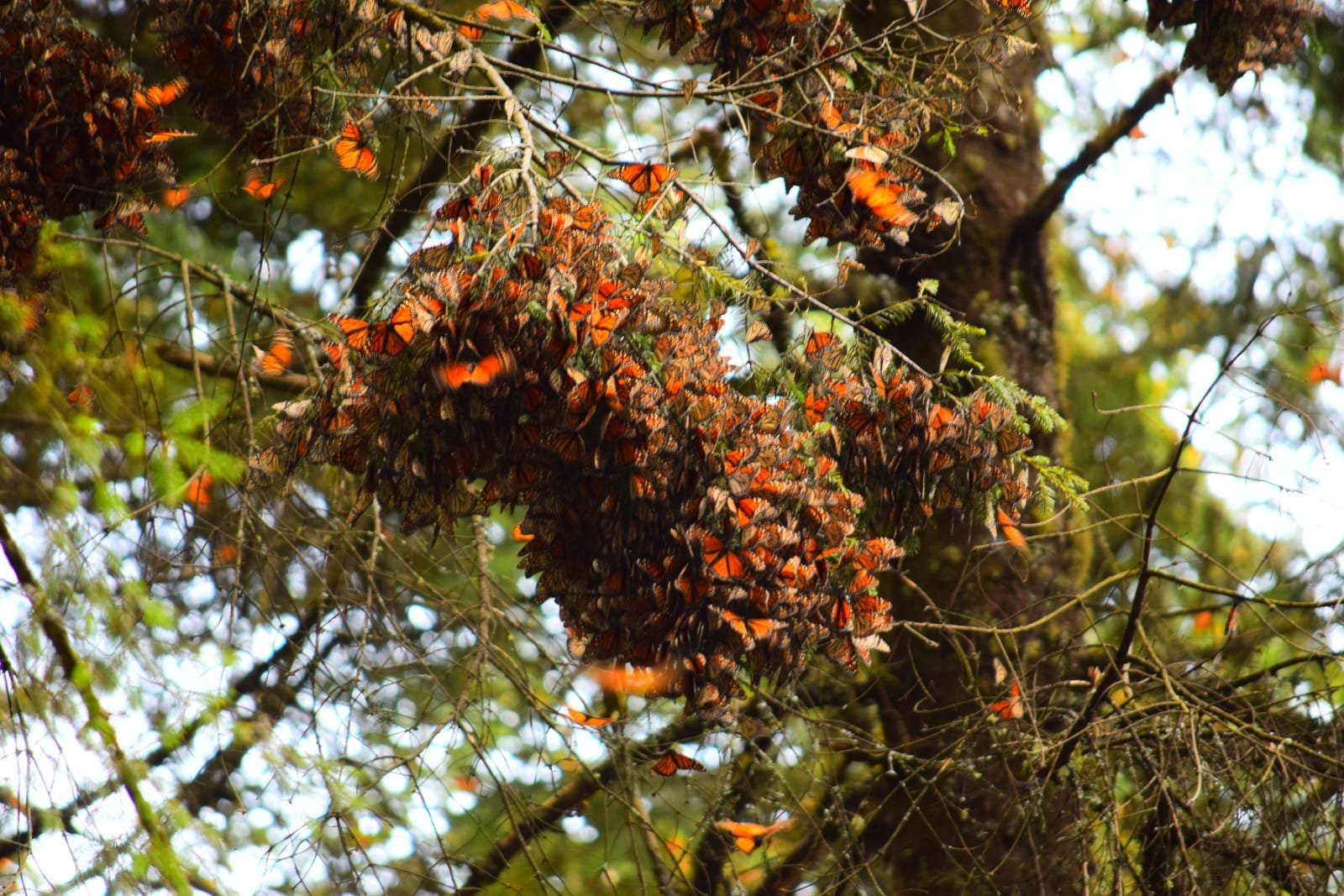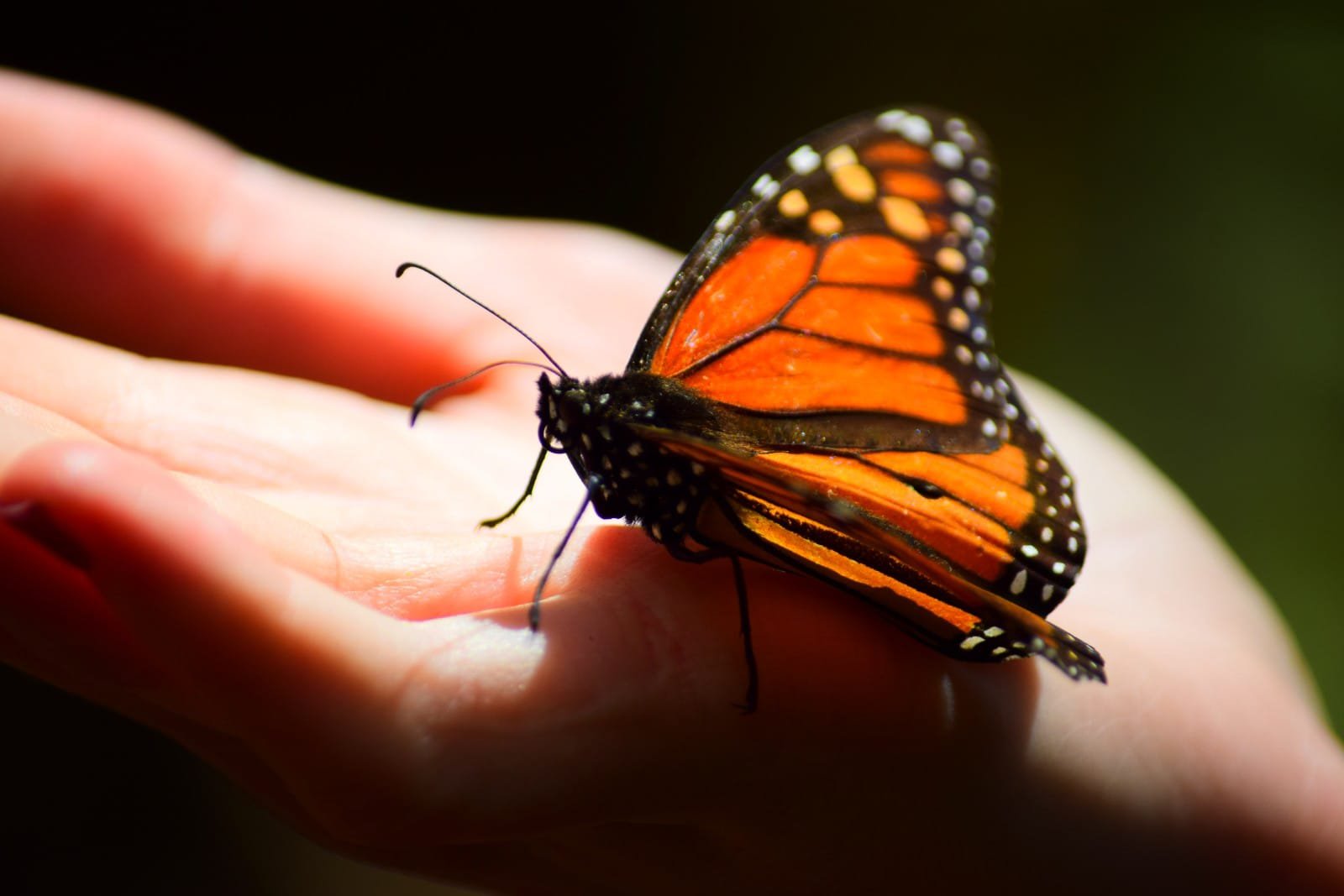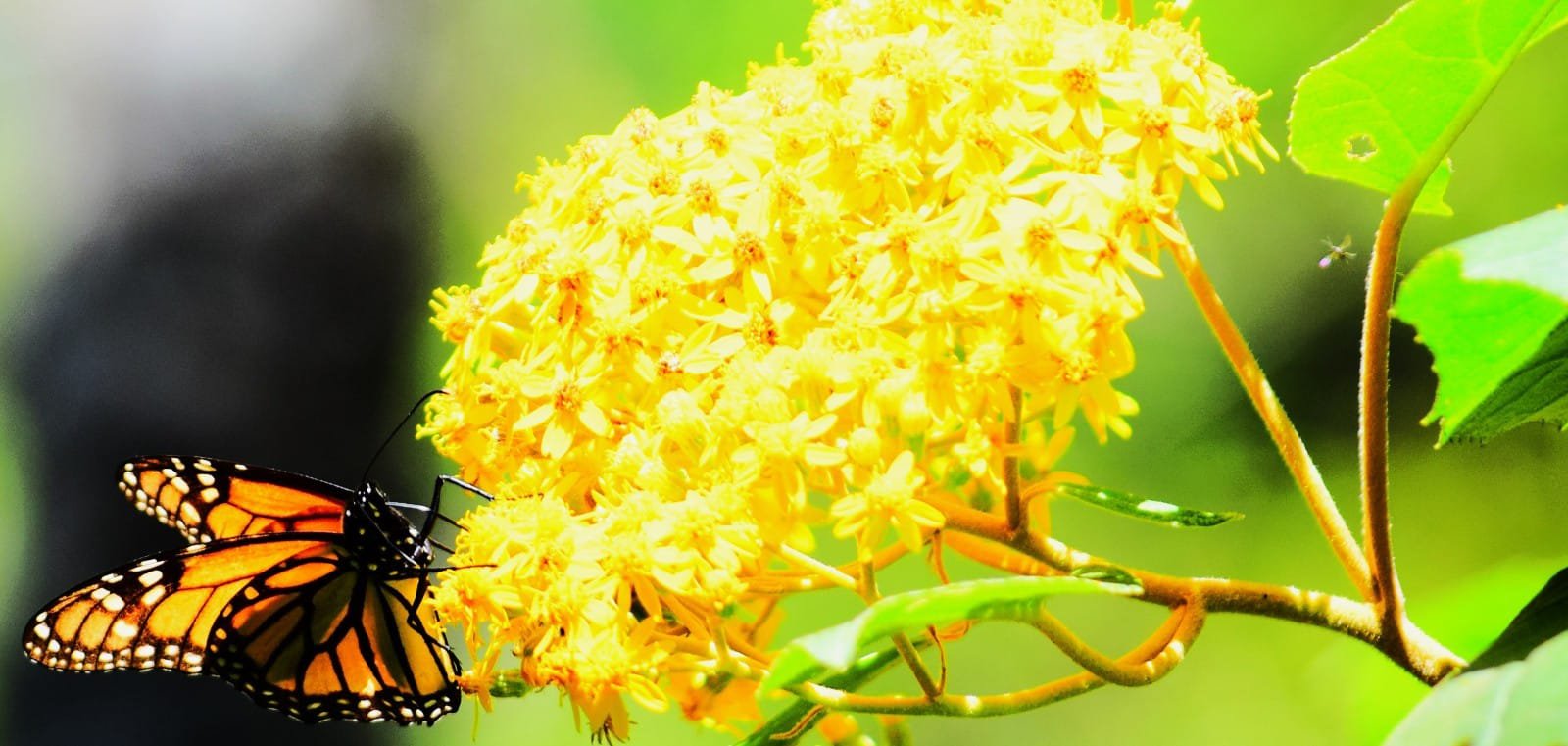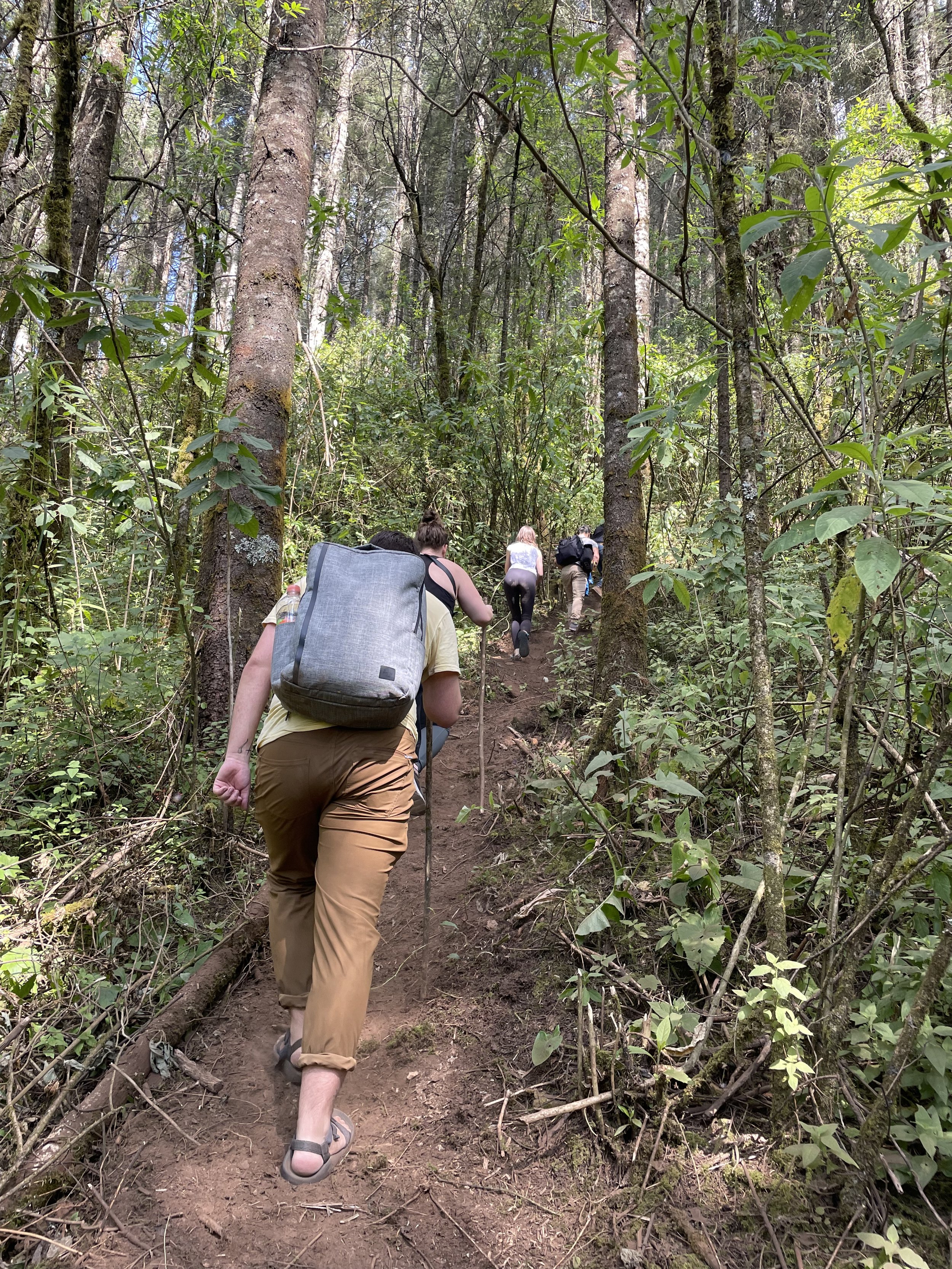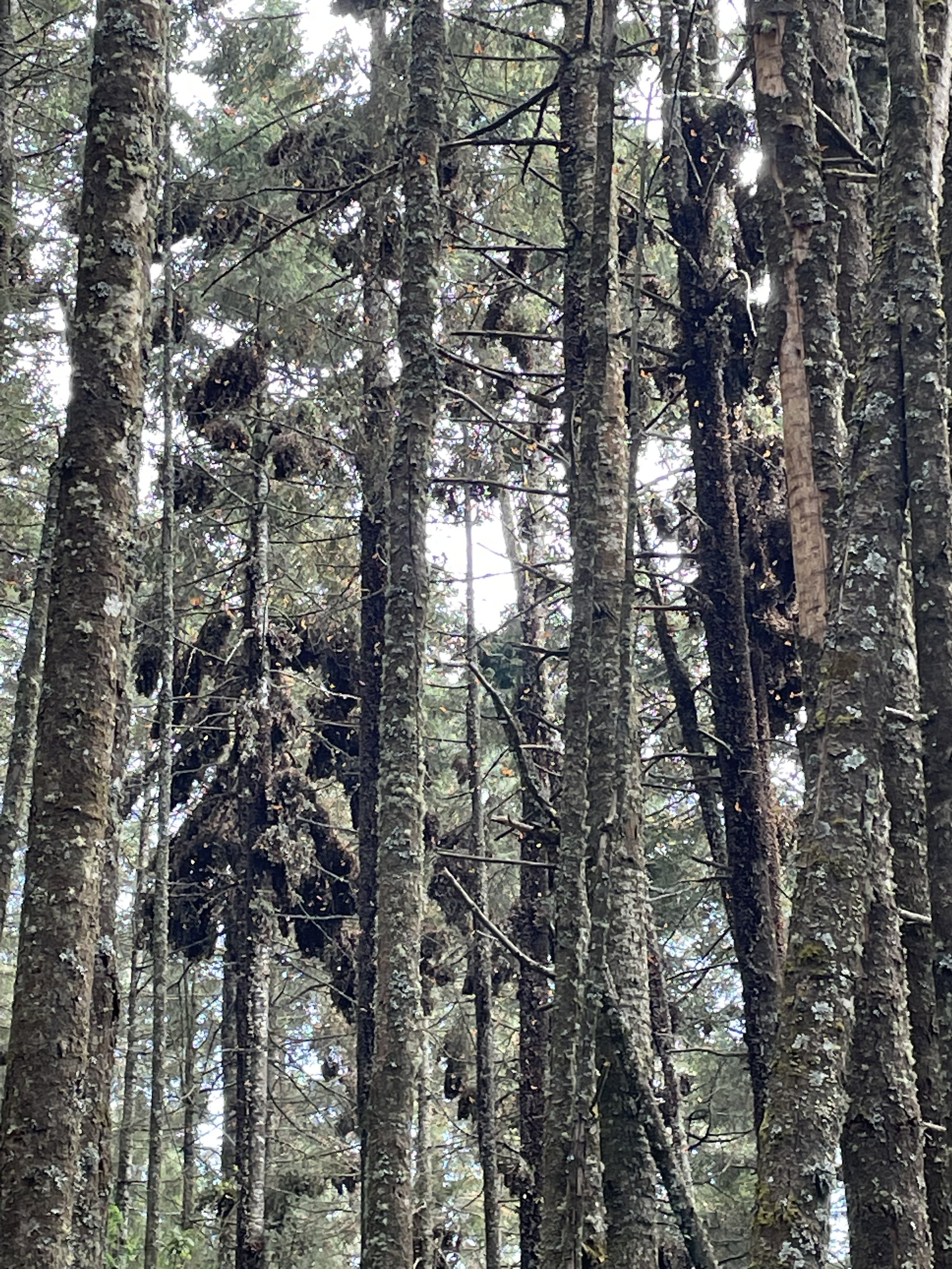Tadler Grant: Migrating with Monarchs
In first grade, our theme, Who am I?, leads us on an exploration of self, the human body, and life cycles – which we explore through both animal and insect life. We start the year learning about the monarch life cycle including the amazing migration that they take to Mexico each fall. This winter break I was fortunate enough to travel to Mexico City to explore the magic of the Monarch Butterfly Biosphere Reserve where millions of monarch butterflies migrate each fall, thanks to the generosity of alumni parents, Richard and Donna Tadler P’05’ 09’, through the Tadler Grant.
We arrived late on Saturday, December 17, and took Sunday to adjust to the altitude. Mexico City itself sits 7,349 feet above sea level. Monday morning, we were up at 5:00 a.m. and off to the Sierra Chincua Sanctuary located in the heart of the Monarch Butterfly Biosphere Reserve in Michoacán, Mexico. It was a beautiful day; clear skies and warmer temperatures. The base of the mountain was already 10,000 feet above sea level and we gained about 800 feet to the top. My lungs were not quite adjusted to the altitude, and compared to the other hikes throughout the week this seemed like the hardest.
We had two fabulous guides, Maria and Manuel, who picked us up in Mexico City and drove us three hours to the sanctuary, and also guided our hike. The hike was about two hours and we learned a lot about native plants, animals, and other creatures in the sanctuary. Maria talked about each season and what to expect in the sanctuary. The monarchs hibernate in December, so there was no guarantee that we would see them flying, but our guides were encouraged by the weather. Maria described to us how amazing it is to see and hear the monarchs arrive in late fall – the butterfly wings flying overhead sound like a light rain.
We didn’t really know what to expect as we climbed to the top. We were excited when we saw one or two monarchs flying overhead! After about an hour and a half of hiking, we crossed into the sanctuary and started to see more butterflies. This part of the hike was now silent. As we entered the heart of the sanctuary, I remember turning a corner - and suddenly the number of butterflies we saw was magical. It was warm enough that the monarchs were very active, flying and filling the sky. The trees looked like they were covered in giant orange beehives, which were thousands of monarchs clustered together. It was breathtaking and amazing to sit and just enjoy the scene. For the protection of the monarchs and the sanctuary, we were not able to get into the center of the action, but just observing from the outskirts was amazing.
We visited two additional sanctuaries throughout the week, taking a day off in between. By the time we climbed Piedra Herrada, our lungs were acclimated to the altitude, and just in time! Piedra Herrada was our most difficult hike. It was only two miles but it was quite steep. The trail was very well maintained and the butterflies were there to meet us at the bottom of the mountain! The entire time we hiked, butterflies circled us.
Overall, the trip was magical. We learned so much about each of the sanctuaries we visited, including efforts to become more sustainable, and how crucial tourism is to each of the communities we visited. We also learned about the devastating effects that climate change and pesticides are having on the monarch population – recently landing them on the endangered species list.
On one of the hikes, I was surprised to learn that only eastern monarchs migrate to Mexico. Monarchs west of the Rockies migrate to central and southern California, something that now seems obvious to me! I hadn’t considered the western migration before this trip, and moving forward I’m looking forward to covering both.
Each year I show first graders a clip of a traveler hiking into the sanctuaries, who explains the migration to all of us, through his eyes. This trip has allowed me to learn more about the monarchs, including their migration, from the native people who maintain the sanctuaries – and to see it with my own eyes. Going forward, I’m excited to be able to teach these lessons based on personal experience and through my own camera lens.
Thank you to Richard and Donna Tadler, who make a gift each year to support teachers like me who dream of academic experiences like this one. I am beyond grateful to have had the opportunity to experience this natural phenomenon. I am also thankful to have had my travel buddy, and new husband, Marc, with me who documented the entire trip! I plan to share a snippet of the trip at an upcoming morning meeting. I am excited to share with our community and my class for years to come.
About the Tadler Grant
The Tadler Grant provides extraordinary professional development opportunities to exemplary GUS teachers - who then bring those first-hand experiences and knowledge back to the classroom. Established by former Trustee Richard Tadler and his wife Donna P ’05 ’09, the grant has provided GUS faculty members a wide range of amazing experiences from attending educational conferences to travel to foreign countries.


